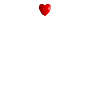
Alice Seed is a Manchester based conceptual artist who makes art for people who love the internet and watching TV.
Alice has considerable experience with the graphic image and representational drawing, and a well-established illustrative practice. However, in recent years she has developed her practice further and moved toward incorporating more textural and temporal mediums, such as moving image pieces and filmed media. Alice Seed’s creative practice pulls influence Television and film, pop culture and 21st century digital socio-cultural phenomena. Her work uses tongue in cheek levity to explore ideas around curated concepts of self, the ephemera of cultural identity and the human condition. This culminates in an on-going body of work that uses concept art, photography and moving image pieces to navigate what it means to be a person living in the 21st century.

My work has evolved a lot over the past year. I had planned to refocus my studio practice back onto drawing – something I had moved away from but felt I was competent at. It wasn’t until after I spoke to my tutor that I was able to really take hold of what it was that I was doing; I used meditation and dream interpretations (which I sought out from 3rd party dream interpreters and psychics) to help guide me through making work, and from those experiments, I ended up exploring ideas around liminal, abstract spaces; conceptual ideas of world spaces that exist within us, and that we see our reality reflected in outside of us.
There’s a lot to talk about when it comes to these ideas of space, and part of what interested me in these ideas are the related themes of perceived realities. This is a wide subject matter, and initially, I decided to focus my attentions and centre my studio practice around the ways we use visual media – Television and the internet primarily – to navigate our ideas of self, and the ways in which we simulate, recreate and imitate curated images of the self in order to navigate our understandings of the world.
My main references for this work were based in visual television media, specifically Television shows that are created for young children. Children’s media has a very specific aesthetic, and a very specific production that goes into it, which I think makes it a prime example of the ways we use visual/digital media to help cultivate our ideas of identity – especially ones that are supported by a wider cultural identity. Children’s TV is didactic, and a lot of it is specifically designed so as to articulate complex ideas in a simple, easy to follow manner. There’s action and response, and there’s a very considered relationship that is created between the audience and the actors and creators. I’ve explored ideas of para-social relationships in my work before, and they are a keystone in the success of children’s TV. I looked closely at art shows – smART and Art Attack, as both of them are structured shows with internal narratives and worlds that interact directly with the audience. I had intended to make my own TV show poking fun at the archetypes used in the genre to explore and play around with the way adults move around the world in the same way as children, dressed up in complexities and nuance, so looking at some successful examples of popular children’s media was integral to my development.
I looked filmmaking techniques to help inform my understanding of the medium, the way cameras can be used to disconnect and connect the audience from the subjects of the film. I looked at Russian filmmaker Elem Klimov, Italian filmmaker Luca Gauagnino as examples of ‘the passive observer’ and ‘the active persona’ within the scene, and how that could help me establish a relationship tone between the subject and the audience. “Vertov believed that the camera is able to capture information beyond what the human eye can. Rather than using the camera to attempt to mimic reality, Vertov’s “cine-eye” creates a new perception that the audience would not be privy to without the aid of the apparatus” student blogger Mirielle wrote on her blog entry about the camera in film. These were interesting ideas developmentally for me, because it changed the way I thought about my proposed filming project. It wasn’t just about the props, or the outfits or the concept behind the camera; it was about the construction of the production itself. I utilised this technique in my photographic work – I have the dunce girl and the football girl looking away from the camera, but the presenter looking directly into the camera. This establishes dominance in the scene, and helps to articulate to the audience that the presenter bridges the gap between work and audience, whereas the dunce girl and football girl exist within their world.
‘Don’t hug me I’m scared’, a 2011 film project by ‘This is it Collective’ (directed by ‘Becky and Joe’) was also a fairly prolific reference for me, not least because it was a viral internet sensation when it first premiered. A sarcastic and critical homage to the commercialised genre of children’s television, it pokes fun of the way such genre shows teach children how to behave in certain ways, making a critique on the proposed protestant agenda being pushed through children’s media through surrealist and dreamlike world. It was important for me to look at visual art that specifically looked into these ideas, because although my work wasn’t intending to be critical, these ideas underpinned the entire context of my work. I intended to make fun of and play with these ideas, but there’s a judgement to be made either way; my work doesn’t exist in a vacuum, and the critiques of media agendas are complex and interwoven within our society as a whole. How can I make work about society, and the way we interact with it/self-actualise through it without also making note of the abuses within the structure?
I spent the majority of studio practice 4b working towards making my own TV show, developing and designing my characters, the world that my show would be set in and the props that I would use. My plan was to film it in a studio and then present it as a film, however, after Christmas I had to take pause on my concepts and production decisions. Because of circumstances outside of my control I had to change my plans entirely, and could no longer go ahead with making my TV show. However, the conceptual ideas that underpinned the work that I was making were strong, and existed as abstract forces outside of my proposed film.
Children’s television media is just one of the ways that I can explore my conceptual ideas, and the characters I developed to navigate the world that I had developed and the references I had collected created a foundation for me to move on to the next logical iteration of my work. The core of my work was exploration; working through these ideas and creating work as I encountered opportunity to do so. I had created storyboards, collected drawings of my concepts; I had photos, all able to stand on their own as finished pieces of work. I had film explorations that, whilst not finished pieces of work, could hold their own against the contextual research I’d done. The work that I was doing, all of it was pertinent.
Ultimately I decided to present my work – all of it – on a live website. In lieu of a degree show, I would host my work, my research, my contextual practice, my finished pieces of work and my still developing work side by side on a website that I would design. The site was informed by web 1.0 and web design from the millennium and early 2000s, and I created a niche for myself to host my work. I had been focusing my efforts and attention on television media, which felt dynamic and active, and put me directly into the work. It was hands on and a project that would have an end, but the ideas that I was working with were still evolving.
The key concepts that fed into my work had been evolving online for decades, and it felt like a natural next step to move my work into that context. Youtube, Instagram, TikTok etc etc., they are all prime examples of action and response, imitation and repetition. This is where cultural identity is formed in the 21st century. The reasons I decided to reference the web presence from the 90s and 2000s, instead of contemporary design, were a) because the way we navigated the internet back then was completely different to how we did now. Users were by and large anonymous, with no faces or names attached, so you could be whoever you wanted to be, whereas now, you’re expected to be the most extreme (interesting, beautiful, worldly, unattainable, vulnerable, accessible, real, unreal) version of yourself, b) user-generated content was king of the internet, and personalised websites dedicated to passions and interests, designed by amateurs and cluttered with overwhelming and junky graphics were the aesthetic currency of the time, which is a direct parallel between the ways we engage with our real-world spaces, and c) nostalgia is a powerful tool for connection and recognition.
Having a website that I could add work to continually is a benefit as well, because instead of having one piece of work, I could have multiple pieces of work and I could keep adding more, the more exploration I do within the theme. It’s contextually strong, and supports my ideas and the narrative within my work.
The concepts are textural, so the work must too be textural. The presentation, the evolution – to keep it static within one piece of work would be to reduce it to something that it’s not.
please take a look at my research and development folder. This includes all of the work that I have done over the last few months, including references, experiments and my thoughts on the work that I'm making.














